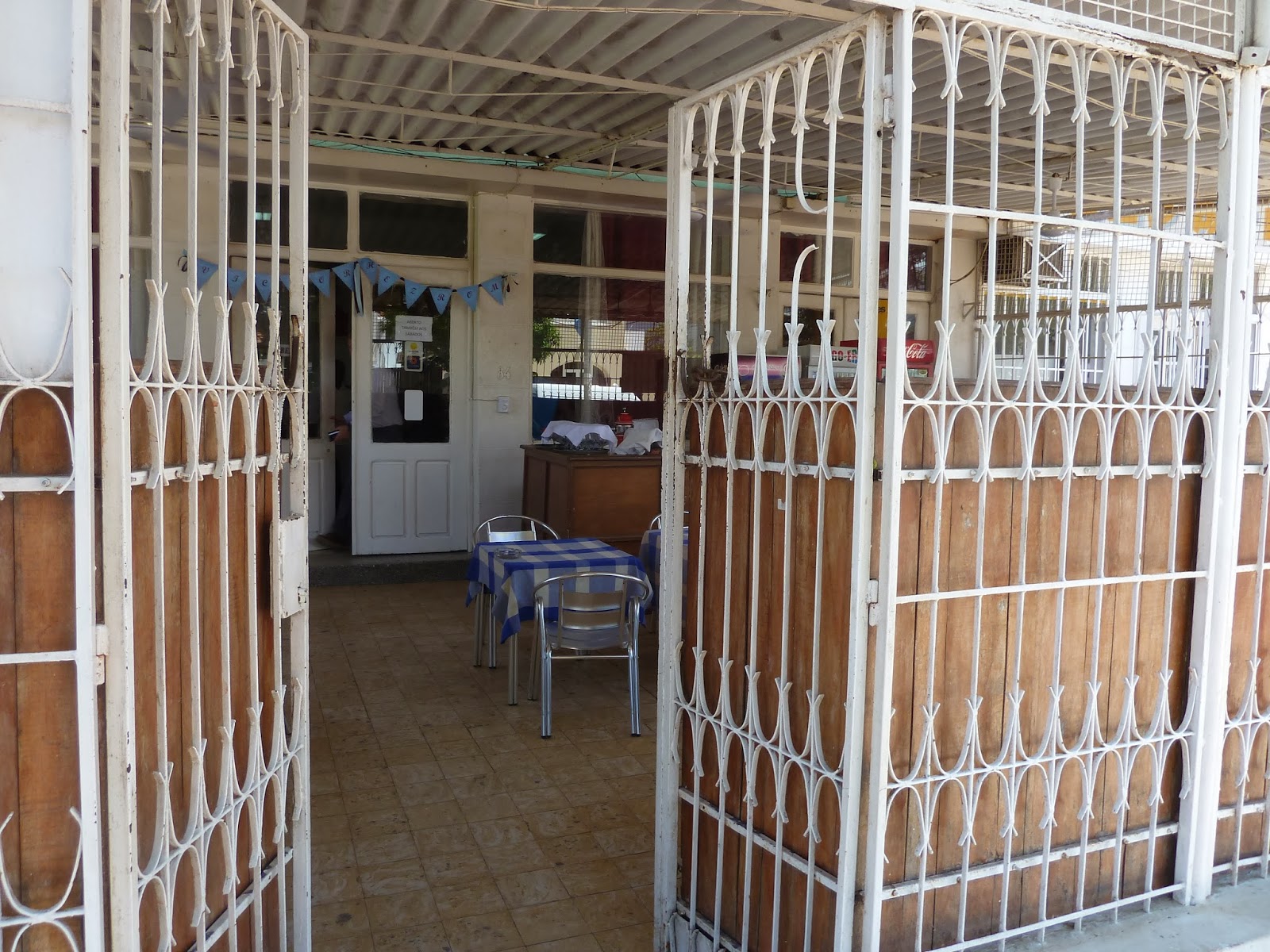 |
| Houses near and around the plantation |
We all sigh with relief and look in wonder at the road lined with giant palm trees and acacia trees sheltering the coffee bushes. The coffee plants are much higher than what I have seen in other coffee producing countries and high grasses and weeds cover the ground. The overgrowth makes it seem like no coffee has been picked here for a long time. We can see both green and yellow/orange/red beans on some of the plants. I was under the impression that this was a producing plantation, but I now have my doubts.
We are surrounded by lush greenness and there are birds calling everywhere. By this time, nearing sunset, we settle into our rooms which are fine, but definitely not worth the price. The place is shabby and selectively clean: clean bathrooms, but don't look behind the curtains or behind the sofa! The fazenda itself with 4 large suites has seen better days, but we stay there in relative comfort. Simple landscaping, painting and general refurbishing of rooms and exterior is definitely needed and would certainly add to the charm. At the rates the hotel charges, there must be capital to re-invest in improvements. No matter, we are happy to be in these beautiful surroundings.
The next day we set of on a walk to the nearby viewpoint. The path leads us through the lush countryside: acacia trees, a few fig trees (fruit not ripe, unfortunately!), palm trees, coffee plants and high grasses surround us. The dampness from the earth steams up and although a breeze stirs through the trees, I am relieved to have shade. The 45 minute walk is beautiful and it feels great to be outside in nature. The viewpoint is breathtaking. The Kwanza river snakes its way around the hills and we can see waterfalls at a distance. On our way back, we meet a very friendly couple and their son. They point out the way to another trail and say that they live in the vicinity but will not work in the fazenda since they are paid 200 KWZ per day ( $2.00 USD) for harvesting, cutting and collecting. It is not worth their time they say.
Back at the plantation, we explore the buildings and we are disappointed to see that everything seems abandoned. The concrete terraces which are used to dry the coffee are overgrown by grass. There is no apparent activity. The warehouses have new locks, so there must be someone with a key. We arrange for a tour of the production area by one of the employees in the morning.
From what we can gather, Fazenda Cabuto was an operating coffee plantation during the Portuguese colonial reign. I would assume that during the war, production was interrupted as most Portuguese fled the country. During our chats, someone says that many Angolans would not drink coffee for many years since it represented repression and colonialism. Today, coffee, mainly espresso, can be bought at any restaurant or eatery but Angola is also a tea-drinking nation.
After the war, the fazenda and surrounding lands were given to a general whom fought in the civil war. This general was either of German or Dutch descent and is known as "the German" or " o alemão". According to hotel staff, no one around the fazenda has ever seen this person. Today, the fazenda is owned by someone else.
On our last day, our tour guide clears up some of our misconceptions: the fazenda actually produces 1000 tons of organic coffee every year. Much of it is exported to Namibia and South Africa or sold at limited points in Luanda. They don't water the plants or use pesticides of any sort. Basically, the plants are left to grow all year and then during harvesting time, the 1,000 local workers that gather in May, June and July first cut down the weeds and overgrowth, then collect the beans and prune the plants. The coffee will dry for 3 months and then will be processed.
One of the huge warehouses has 2250 large sacks of picked, dry, coffee which has not been husked yet. Some of the sacks are from 2011 and onward. It is a pity that the coffee is not being sold. I wonder if it is world market coffee prices that limit production and do not make it worthwhile for the plantation owner to invest enough so that production can reach its full potential? As we leave, we buy 1 kg. of beans for 1,000 KWZ ($10.00 USD) to take home with us and wonder what we should actually be paying to make the worker's wages worth their time.






































